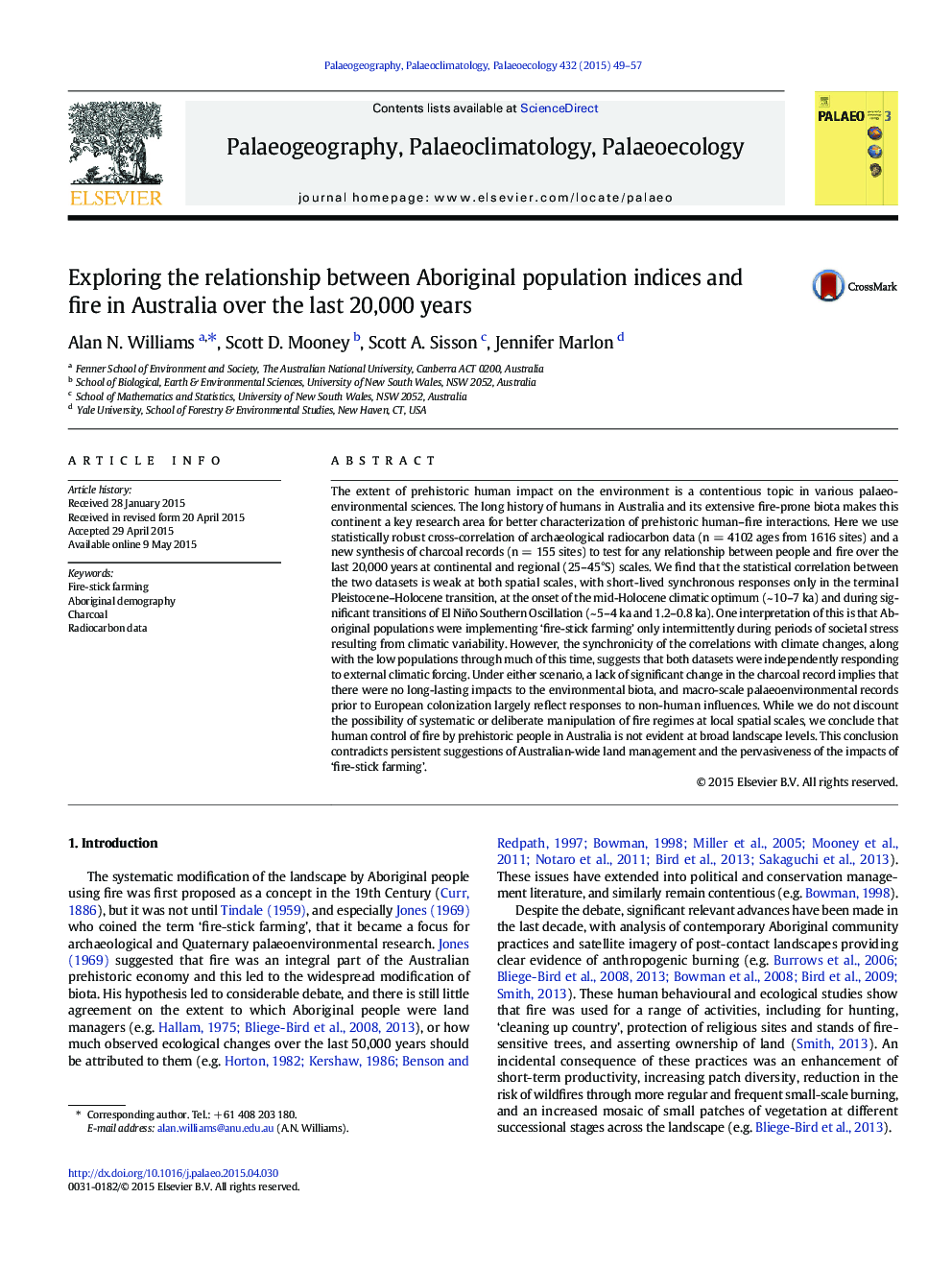| کد مقاله | کد نشریه | سال انتشار | مقاله انگلیسی | نسخه تمام متن |
|---|---|---|---|---|
| 4465886 | 1622158 | 2015 | 9 صفحه PDF | دانلود رایگان |
• Statistically robust analysis of continental human-fire indices between 20–0 ka demonstrates little overall correlation.
• Results show only short-synchronous correlations during major climatic transitions at 10–7 ka, 5–4 ka, and 1.2–0.8 ka.
• Possible human–fire relationships explored, with strong evidence suggesting both indices responding independently to climate.
• Data suggests that anthropogenic fire is not evident, nor had a long-term influence, at broad landscape levels in the past.
• Data lends support to pre-European macro-scale palaeoenvirommental records not being influenced by anthropogenic burning.
The extent of prehistoric human impact on the environment is a contentious topic in various palaeo-environmental sciences. The long history of humans in Australia and its extensive fire-prone biota makes this continent a key research area for better characterization of prehistoric human–fire interactions. Here we use statistically robust cross-correlation of archaeological radiocarbon data (n = 4102 ages from 1616 sites) and a new synthesis of charcoal records (n = 155 sites) to test for any relationship between people and fire over the last 20,000 years at continental and regional (25–45°S) scales. We find that the statistical correlation between the two datasets is weak at both spatial scales, with short-lived synchronous responses only in the terminal Pleistocene–Holocene transition, at the onset of the mid-Holocene climatic optimum (~ 10–7 ka) and during significant transitions of El Niño Southern Oscillation (~ 5–4 ka and 1.2–0.8 ka). One interpretation of this is that Aboriginal populations were implementing ‘fire-stick farming’ only intermittently during periods of societal stress resulting from climatic variability. However, the synchronicity of the correlations with climate changes, along with the low populations through much of this time, suggests that both datasets were independently responding to external climatic forcing. Under either scenario, a lack of significant change in the charcoal record implies that there were no long-lasting impacts to the environmental biota, and macro-scale palaeoenvironmental records prior to European colonization largely reflect responses to non-human influences. While we do not discount the possibility of systematic or deliberate manipulation of fire regimes at local spatial scales, we conclude that human control of fire by prehistoric people in Australia is not evident at broad landscape levels. This conclusion contradicts persistent suggestions of Australian-wide land management and the pervasiveness of the impacts of ‘fire-stick farming’.
Journal: Palaeogeography, Palaeoclimatology, Palaeoecology - Volume 432, 15 August 2015, Pages 49–57
